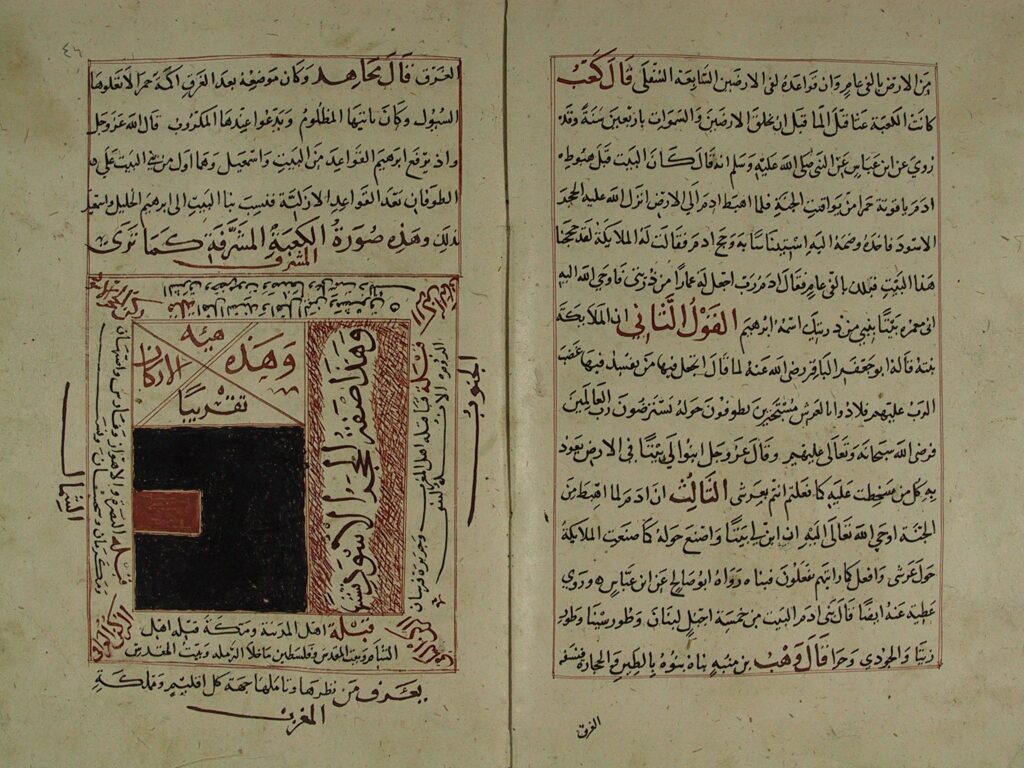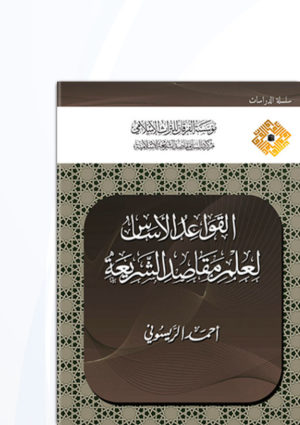Ahmed ibn ‘Abd al-Salām Raissouni

The contents of this introduction was the subject of a lecture and discussion that formed part of an academic conference entitled “Maqāšid al-Sharī‘ah bayna al-Tahayyub wa-l-Tasayyub”. The conference, held at the end of May 2014, was jointly organised by al-Furqān Islamic Heritage Foundation, the Markaz al-Maqāšid li-l-Dirāsāt wa-l-Buħūth, and the Faculty of Arts and Humanities (Sais, Fez).
Studies on the science of maqāšid al-sharī‘ah (the objectives of Islamic Law) have seen a rapid, continual, and wide-ranging growth in our time. This principally began following the publication of al-Shāŧibī’s al-Muwāfaqāt and then Ibn ‘Āshūr’s Maqāšid al-Sharī‘ah al-Islāmiyyah, in which he called for the establishment of a new science that he labelled “The science of maqāšid al-sharī‘ah”1.
Many scholars consider al-Shāŧibī to be the founder of the science of maqāšid al-sharī‘ah and proclaim that the science was actually born in his book al-Muwāfaqāt, since in this unparalleled work we find a complete section on the subject. This section is set apart from the rest of the book by its subject matter, the classification used, the theories, terminology, and principles it contains, and by its being the largest section of the book. In addition to all this, it has its own introduction and conclusion, making it a completely independent section within the book.
If we consider that the birth of the science of maqāšid at the hands of Imam al-Shāŧibī was and remained a latent birth, we can today declare its complete birth. Nowadays, writings on maqāšid al-sharī‘ah can be counted, at the very least, in the hundreds, both in Arabic and other languages. These writings have dealt with numerous and varied issues relating to the theoretical foundations, details, and practical applications of the field. Above and beyond this, the science of maqāšid has come to be taught as a separate subject to such an extent that it has pervaded every university, Islamic college, and department of Islamic studies the world over. Research centres specifically dealing with maqāšid al-sharī‘ah have been set up, and numerous seminars, conferences, and academic courses have been, and continue to be organised, not to mention numerous other ways that attention has been lavished on the subject.
Maqāšid studies has witnessed another specific development: the appearance of research in the field of the principles of maqāšid al-sharī‘ah, whereby scholars seek to derive these principles from their sources, study them, and clarify their importance. Perhaps the most important work undertaken in this field to date is Ma‘lamat Zāyid li-l-Qawā‘id al-Fiqhiyyah wa-l-Usūliyyah2. In this encyclopaedic work we find a section dedicated to the principles of maqāšid al-sharī‘ah contained in three separate volumes and comprising more than a hundred individual principles. Amongst these are principles dealing with the methodology of deriving the maqāšid. The emergence of distinct principles within the science of maqāšid is the clearest indication of its maturity and independence as a discipline.
We can therefore confirm that the birth of the science of maqāšid al-sharī‘ah has become an undeniable reality. This branch of learning today has its own history and scholarly authorities, its own writings, its own individual issues and subdivisions, and its own specific foundations, principles, and functions. In short, it lacks none of the components required of an independent discipline.
As a result, numerous jurist, thinkers and activists, as well as many economists and politicians have rushed to seek its assistance3,finding that it helps and benefits them in a way not seen with the sciences of fiqh(jurisprudence) ušūl al-fiqh(legal theory) or any of the other existing disciplines.
Amongst early writers, deductions and directives based on maqāšid al-sharī‘ah were relegated merely to the realm of needs or embellishments, whereas in our time maqāšid research and studies have become absolute necessities4.
As for the view that the sciences of maqāšid al-sharī‘ah and ušūl al-fiqhare reliant on each other, this is true but it does not preclude maqāšid al-sharī‘ah existing as a separate science distinct from ušūl al-fiqh. Neither should we forget that all the Islamic sciences are dependent upon each other; they all have the same origin and the same goal, they all borrow from each other, and they are all descendents of one another. Even Ibn ‘Āshūr, the first to call for the establishment of maqāšid al-sharī‘ahas a separate science, stated that the foundations and principal building blocks of maqāšid al-sharī‘ah can be found dispersed in the science of ušūl al-fiqh, and that what is needed is to extract them from it, arrange them, and build upon them. In fact he even sees that there are principles in ušūl al-fiqh that, if not entirely related to maqāšid al-sharī‘ah, can be borrowed and put right at the forefront of maqāšid studies. For this reason he urged that:
“We adopt those aspects of ušūl al-fiqh that are not [obviously] included within our goal of recording the maqāšid and make them an introduction to this noble science: the science of maqāšid al-sharī‘ah.”[6]
As is well known, the science of fiqh initially developed out of the science of Ḥadīth and only later became distinct from it, i.e. knowledge attained via the intellect developed out of transmitted knowledge. In the same way, the science of ušūl al-fiqh developed out of the science of fiqh before becoming distinct from it, meaning the theory underlying Islamic jurisprudence was extracted from the rulings themselves. Based on this, it is neither strange nor objectionable that the science of maqāšid al-sharī‘ah should develop out of, and then become distinct from the science of ušūl al-fiqh. In all of these cases, however, there remains an intimate and enduring bond between each pair of sciences.
This is if we even accept the view that the science of maqāšid al-sharī‘ah emanated from the science of ušūl al-fiqh and that its subject matter and technical concerns come exclusively from the latter. The reality, however, is that most of what is found in maqāšid studies, all the way from ‘Izz al-Dīn ibn ‘Abd al-Salām and his predecessors up to al-Shāŧibī and those that followed him, is either unprecedented and taken directly from the Qur’an and the Ḥadīth, or gathered from numerous fields of study, such as Qur’anic exegesis, jurisprudence, legal theory, legal principles, politics, Sufism, theology, comparative religion, etc.
It has become clear and well established that maqāšid studies has its own topics, functions, and principles, which differ notably from those contained in ušūl al-fiqh and all other branches of Islamic learning.
If Imam al-Shāfi‘ī is rightly considered the founder of a new science – the science of ušūl al-fiqh– due to a few dozen pages he composed and a selection of principles he laid down, then it is even more fitting that we today acknowledge the science of maqāšid al-sharī‘ah as a subject in its own right, given all the writings and research it has offered, all the achievements it has accomplished, and all the theoretical and practical possibilities it has unlocked.
In support of this growing science and to assist in establishing its foundations, I decided to further discuss and help clarify three of its pillars and principles. These three are intimately intertwined to such an extent that in reality they can be considered as one single principle. They are:
- The principle of ta‘līl (rationalisation)
- The principle of istišlāħ (seeking benefit)
- The principle of i‘tibār al-ma’āl (paying regard to the consequences of a ruling)
These principles having been studied often and much, both classically and in the modern era. Despite this, examining and engaging with them for so long, seeing novel applications for them, and viewing them in a new context have confirmed for me just how much there is still to be said. Truly, knowledge and academic research are without end.
{My success comes only with God’s help. In Him I trust and to Him I turn} [Qur’an 11:88]
Written in Rabat on 1stRabī‘ al-Awwal 1425 / 2ndJanuary 2014.
Ahmed ibn ‘Abd al-Salām Raissouni
| Source note: This article is part of the book; The Fundamental Rules of the Science on Sharīʿah Objectives, translated into English and will be published soon by the Foundation; Ahmed Raissouni, The objectives of the Law; the Fundamentals Principles of the Science of Maqāšid, Al-Furqan Islamic Heritage Foundation, London, UK. Please note that some of the images used in this online version of this article might not be part of the published version of this article within the respective book |


